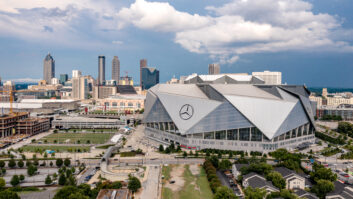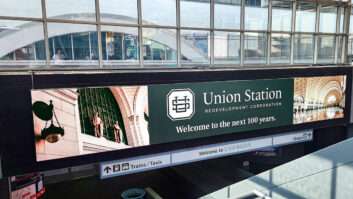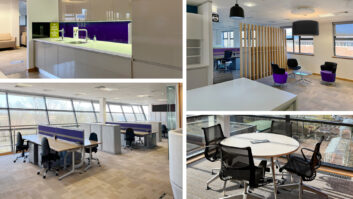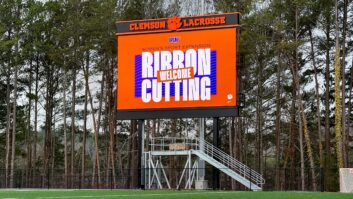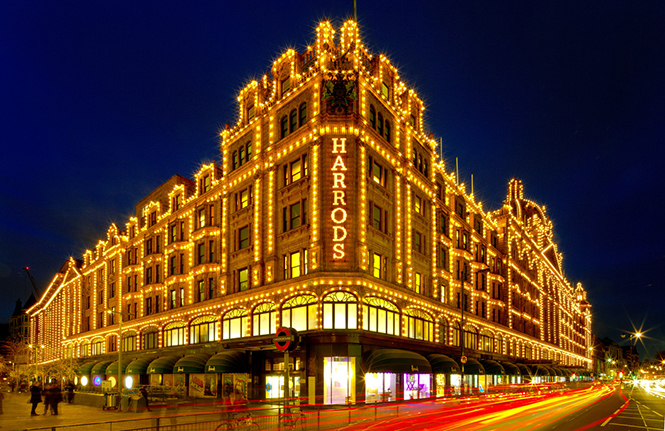
Part of a £200m investment plan to refresh iconic “tired and tatty” retail store, displays have helped boost advertising opportunities, whilst brands see an instant return
Harrods, one of the world’s leading “luxury brand” retailers, has revealed that the introduction of strategically places LED digital displays in its store, has helped boost sales for some of its brands by as much as 25 per cent.
Guy Chesterton (pictured right), the media and sales director at the firm for 15 years, made the claim during a keynote discussion in London earlier this month – although did not reveal specific names.
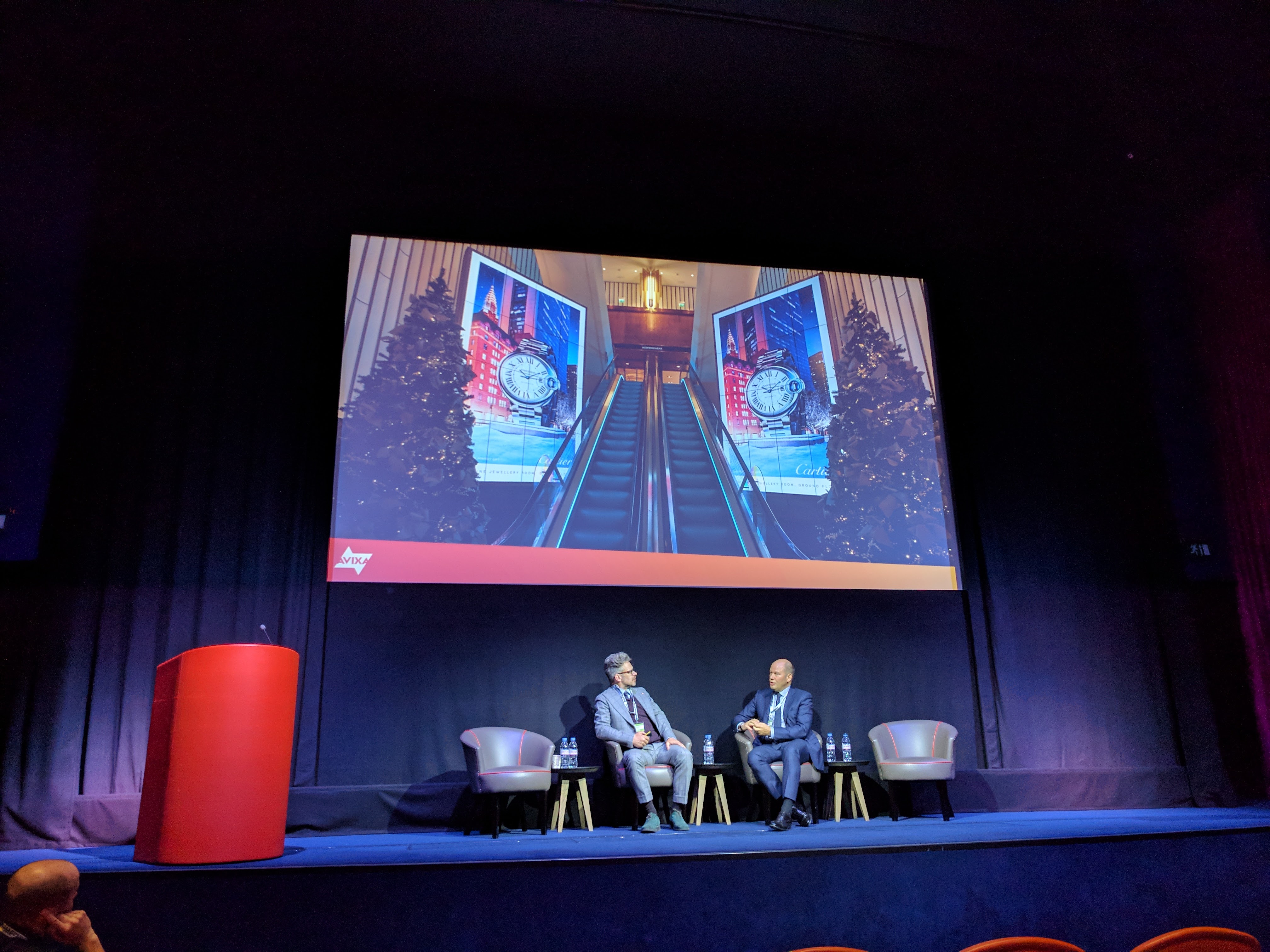
Speaking alongside Dan Goldstein, senior VP marketing and communications at AVIXA, Chesterton discussed how the retailer – owned by Qatar Holding, has invested more than £200 million in refreshing its once “tired and tatty” store, since its purchase from previous owner Mohamed Al Fayed in 2010 for £1.5 billion.
The introduction of digital signs around its store, which covers over five acres of land and more than 1,000,000 square feet over five floors, has been part of a major focus for close to a decade to help drive revenues, but also improve the customer experience. Harrods saw an 18.7 per cent uplift in pre-tax profits to £168m during the 52 weeks to January 30, 2016 – its last published results.
“We have lots of anecdotal evidence and lots of testimonials from brands who have told us, we (they) had a 25 per cent uplift (advertising on displays) and then the campaign finished and it all settled down again,” said Chesterton, who is responsible for driving advertising revenues in store.
“We have an extraordinary proposition in Harrods, which is filled extraordinary experience’s. Part of those experiences is the digital screens you see immediately as you enter the store.”

Challenges
He continued: “Innovation is very critical. Whilst we are a brand full of [British] heritage, the investment in digital signage has been something we’ve been very focused on. For those that have visited will know that Harrods is a very difficult store to get around. Navigation is a big challenge for us as the building is a series of rooms, which we can’t change.
“We’re quite jealous of Selfridges on that front as they have a store that was designed to be a store, whereas Harrods was a store in the ground and apartments above.
“The building is very old, which gives us some challenges when adding new technologies. It’s an old listed and historic building so there are lots of restrictions, plus it also has extraordinarily thick walls. So even installing WiFi was a difficulty task.”
Less is more
Harrods, which has around 15 million visitors a year, has adopted a less is more strategy regarding its level of advertising within its store. In recent years, it’s converted 250 poster light boxes with sixty 55-inch digital displays, used by different brands to promote their products throughout the store in 15 second bursts.
The first generation of these displays were Plasma. Now in its third generation of upgrades, displays are being updated with “future proof” LED’s, benefitting customers, brands and the conditions – with the brightness of the screens coping with natural light from the windows.
Visitors are also greeted on each floor with two eye catching rectangular screens composed of 12 individual LED panels (AOTO) again providing advertising opportunities and providing a “wow factor” for visitors.
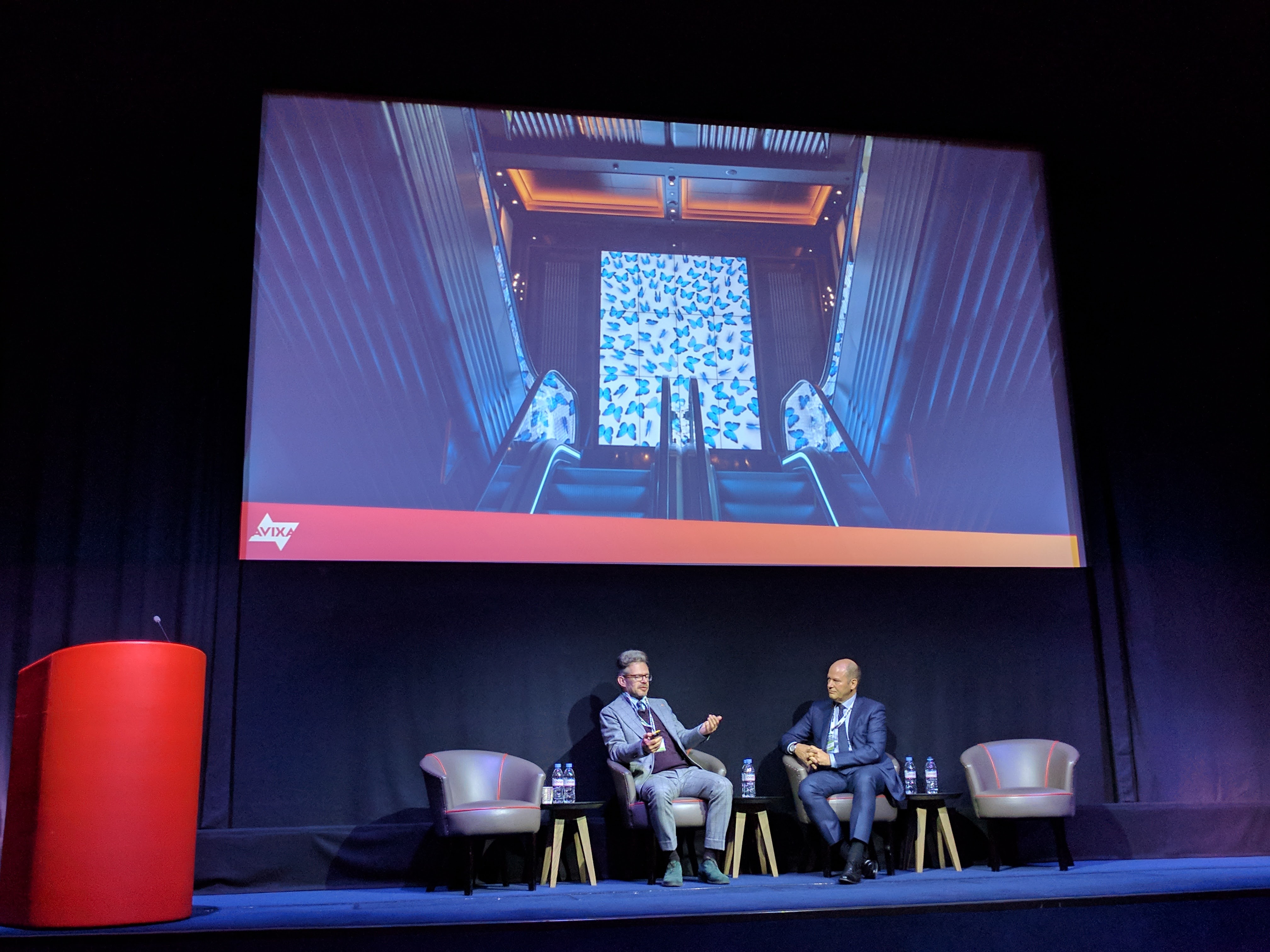
“We’re moving away from multiple locations of screens around the store, to going with fewer locations, with higher impact”
“We already had a legacy of locations for display and visual marketing, but this (the store refresh) gave us the opportunity to put in place state of the art technology. A chance to clean it all up and make it fresh.
“We looked at LCD, video walls but we felt the future was very much LED. A much bigger canvas and much brighter. There are lots of windows at Harrods, so lots of sunlight, so we needed something that could really punch through.
“We’re moving away from multiple locations of screens around the store, to going with fewer locations, with higher impact. It’s part of a strategy of to de-clutter. Its no mistake the digital networks we have are located in the high footfall areas of the store.
We are in this world now where the whole advertising outdoor medium has gone digital and we’re following that in the retail space
“You see a lot of putting in screens for screens sake. We’ve learnt our lesson. We’ve shifted back now where possible to look at more iconic locations and use the best technology we can put in. The LED deployed here is 1.7mm pixel pitch. We were one of the first in the world to have 1.7mm inside a retail environment, which went in a year ago.
“The reason we have had to go so tight on the pixilation is because the customers are so close to the screen. Unfortunately 1.7m pitch is also extremely expensive.
“LED for us is an exciting medium. Were seeing it on the streets, every major capital city, posters are moving to digital – the world is going to digital.
“We are in this world now where the whole advertising outdoor medium has gone digital and we’re following that in the retail space.”

Size matters
The inclusion of LED and video walls is also designed to help meet the demands from potential advertisers, who spend a “fortune” on creating content to promote their products, and are demanding the clearest and biggest “canvas” to showcase them on.
Harrods is also working closely with brands to provide specific content on its displays – again providing significant advertising and revenue opportunities At the beginning of this month for example, Dolce and Gabbana did a complete take over of all screens in store for three days as part of a Christmas promotion.
“The world in which we (Harrods) live in is very much the world of luxury brands. Those brands spend a fortune on glamorous shoots around the world, using the best photographers. They’re obsessed by the quality of the content. So the bigger the canvas you can give a luxury brand, the better. Size does matter.”


